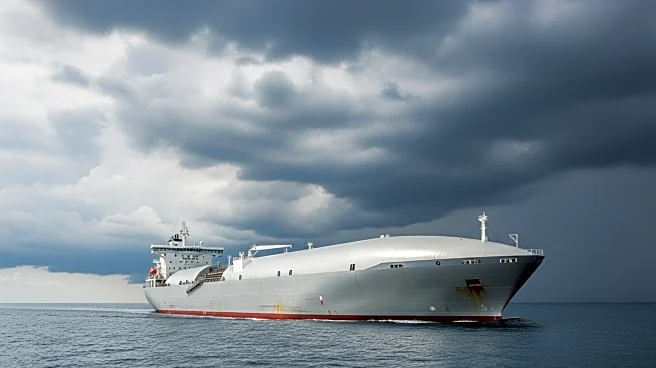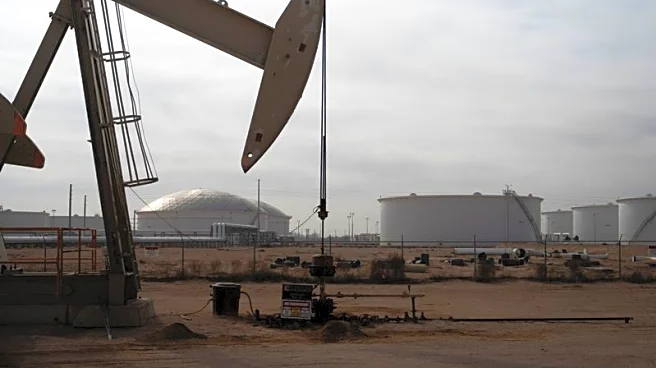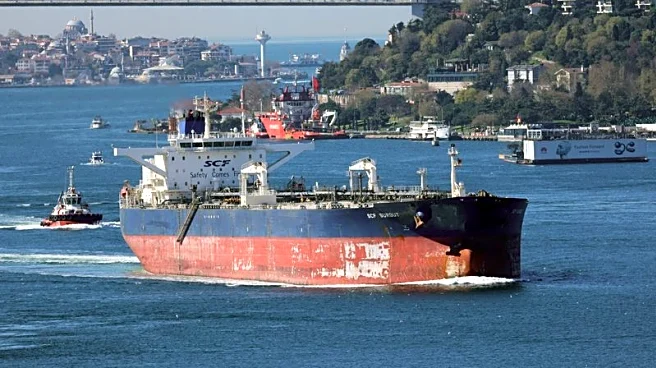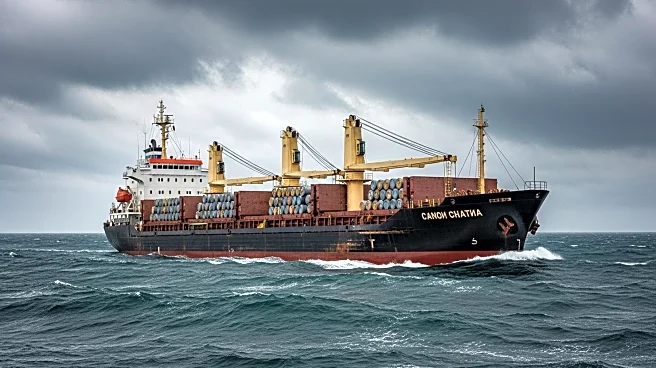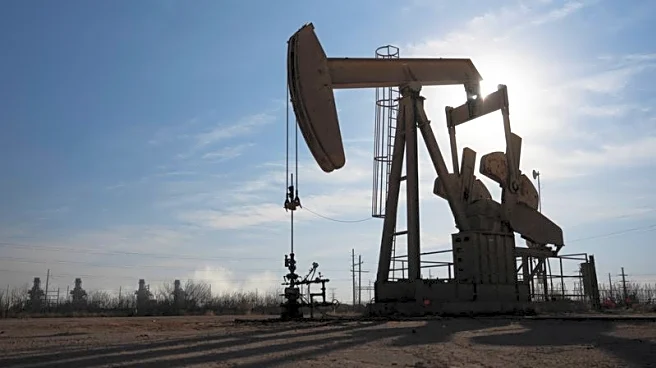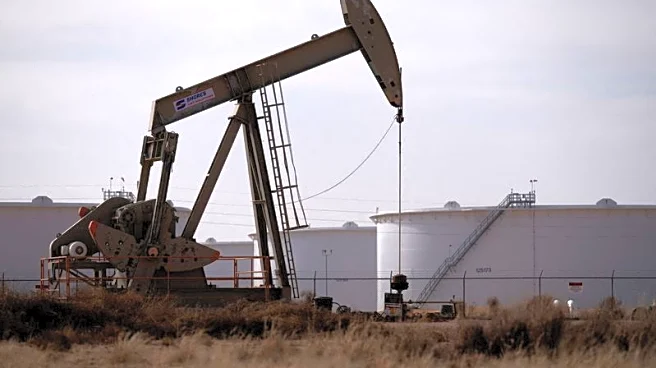Rapid Read • 7 min read
The tanker vessel market is experiencing strains due to imbalances in supply and demand. The International Energy Agency (IEA) has increased its crude oil supply forecast following OPEC+'s decision to reverse production cuts. However, oil demand and refinery throughput are not keeping pace with the supply expansion, leading to a projected oil surplus. This surplus is expected to drive down oil prices, with the U.S. Energy Information Administration forecasting Brent crude to average $63 per barrel in the latter half of 2025. The market for product tankers is particularly affected, with increased supply growth and shorter sailing distances contributing to weaker demand.
AD
The dynamics in the tanker vessel market have significant implications for global trade and energy prices. A surplus in oil supply can lead to lower prices, benefiting consumers and industries reliant on oil. However, it also poses challenges for tanker operators, who may face reduced demand and lower freight rates. The situation underscores the interconnectedness of global energy markets and the impact of geopolitical decisions on supply chains. Stakeholders in the shipping and energy sectors must navigate these complexities to maintain profitability and stability.
The market is expected to gradually adjust as stakeholders respond to the changing supply-demand dynamics. Efforts to negotiate peace between Russia and Ukraine could lead to a normalization of trade routes, potentially affecting tanker demand. Additionally, shifts in global energy policies and economic conditions will influence future market trends. Industry players will need to adapt strategies to manage risks and capitalize on opportunities in a volatile environment.
AD
More Stories You Might Enjoy
